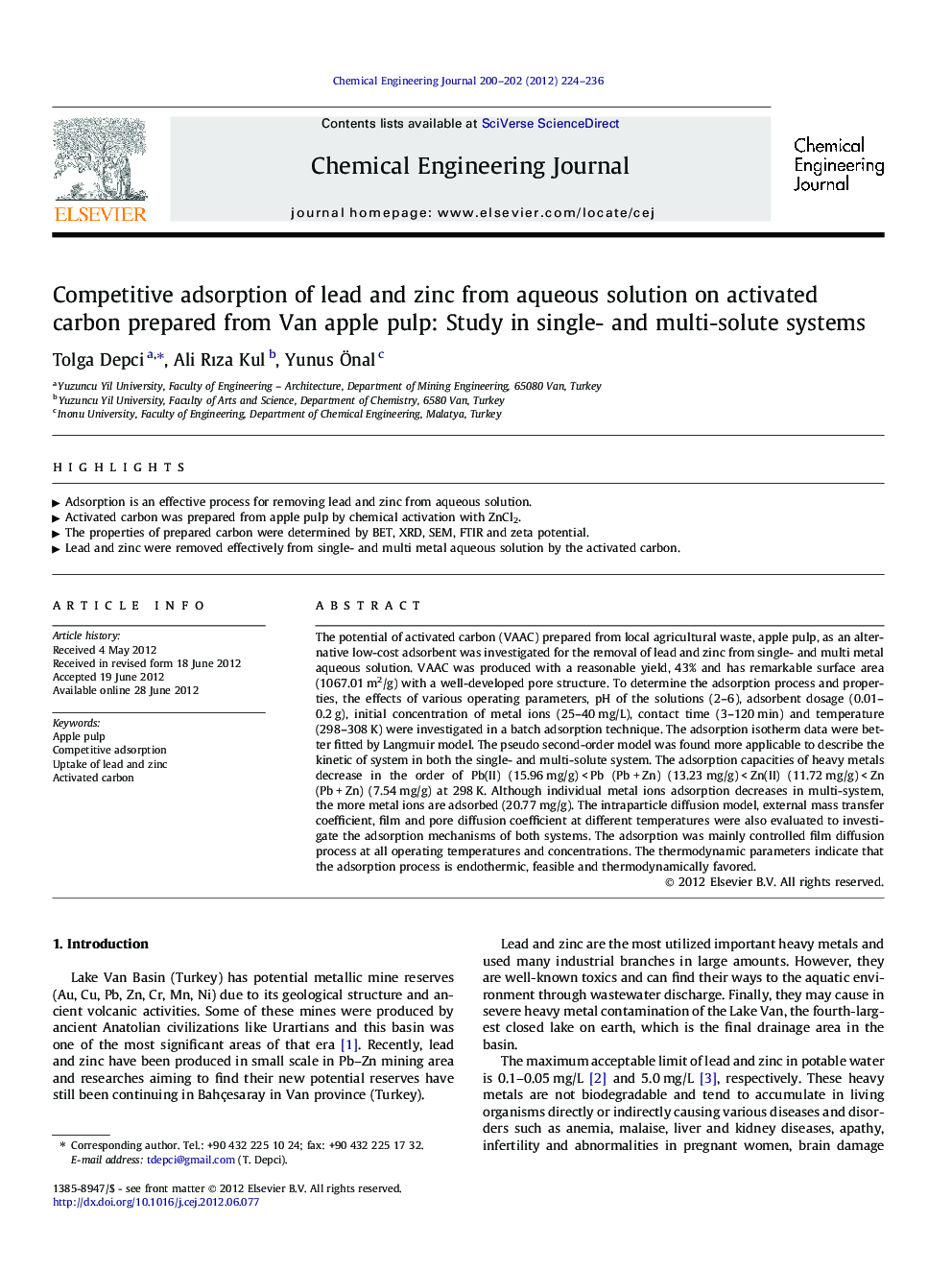| Article ID | Journal | Published Year | Pages | File Type |
|---|---|---|---|---|
| 149549 | Chemical Engineering Journal | 2012 | 13 Pages |
The potential of activated carbon (VAAC) prepared from local agricultural waste, apple pulp, as an alternative low-cost adsorbent was investigated for the removal of lead and zinc from single- and multi metal aqueous solution. VAAC was produced with a reasonable yield, 43% and has remarkable surface area (1067.01 m2/g) with a well-developed pore structure. To determine the adsorption process and properties, the effects of various operating parameters, pH of the solutions (2–6), adsorbent dosage (0.01–0.2 g), initial concentration of metal ions (25–40 mg/L), contact time (3–120 min) and temperature (298–308 K) were investigated in a batch adsorption technique. The adsorption isotherm data were better fitted by Langmuir model. The pseudo second-order model was found more applicable to describe the kinetic of system in both the single- and multi-solute system. The adsorption capacities of heavy metals decrease in the order of Pb(II) (15.96 mg/g) < Pb (Pb + Zn) (13.23 mg/g) < Zn(II) (11.72 mg/g) < Zn (Pb + Zn) (7.54 mg/g) at 298 K. Although individual metal ions adsorption decreases in multi-system, the more metal ions are adsorbed (20.77 mg/g). The intraparticle diffusion model, external mass transfer coefficient, film and pore diffusion coefficient at different temperatures were also evaluated to investigate the adsorption mechanisms of both systems. The adsorption was mainly controlled film diffusion process at all operating temperatures and concentrations. The thermodynamic parameters indicate that the adsorption process is endothermic, feasible and thermodynamically favored.
► Adsorption is an effective process for removing lead and zinc from aqueous solution. ► Activated carbon was prepared from apple pulp by chemical activation with ZnCl2. ► The properties of prepared carbon were determined by BET, XRD, SEM, FTIR and zeta potential. ► Lead and zinc were removed effectively from single- and multi metal aqueous solution by the activated carbon.
